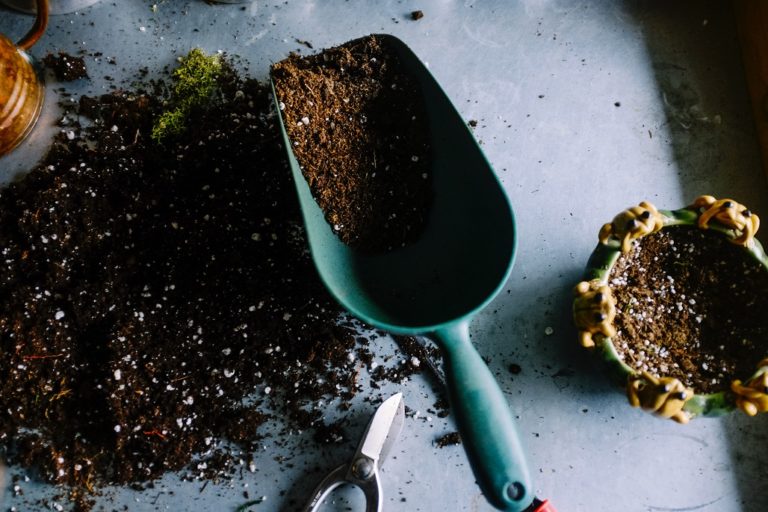Most herbs are relatively shallow rooted and can be grown in most pots, containers or raised beds. The key element for growing herbs is providing a balance between enough soil to hold moisture while at the same time providing enough drainage for the plants to not suffer from root rot. Herbs are a perfect selection for patio or balcony gardening as you can grow several of the most common herbs you will use in one container.
As stated, most herbs are shallow rooted. Chives, Oregano, Tarragon, Thyme will make do with as little a 6″ of soil. Basil, Cilantro, Parsley, and Summer Savory can be grown in 8″ deep containers. Other herbs need a bit more space. Rosemary and Sage, for example, prefer at least 12″ of soil as does mint, which you should always grow in containers unless you want it everywhere.
If you are growing herbs in raised beds over native soil, you have a bit more flexibility. Generally raised beds are at least 10″ deep and will be adequate for most herbs.
Shallow-rooted herbs (6-8 inches):
Medium-rooted herbs (8-10 inches):
Deep-rooted herbs (10-12 inches):
Extra-deep rooted herbs (12-14 inches):

Whether you are growing herbs in raised beds or in containers, a well-drained growing media is essential. This can either be a pre-mixed container or one you make yourself. Essential requirements are lots of organic content and a good amount of perlite or vermiculite to facilitate drainage. Here is a good general recipe for growing herbs in containers or raised beds.
If you do use peat moss, remember to add one tablespoon of garden lime per gallon of peat moss. Peat moss is acidic and the addition of garden lime will help preserve a neutral soil pH. If you are unsure of your soil pH you can use a test kit or a 3-in-1 meter to test it.
Herbs in general do not need the fertilization that other plants do. If you are growing your herbs in raised beds, they will need minimal fertilizing. On the other hand, if you are growing your herbs in containers, they will be drying out more often and have more water flushing through it, rinsing away more of the nutrients in the potting mix.
Your plants will benefit from the addition of an all natural, organic, slow-release fertilizer. You can mix some of this in at the time of planting. Remember that over-fertilized herbs will grow big plants, but at a cost of fewer of the essential oils that give them their seasoning properties.
One factor that you will want to keep in mind when thinking about the container depth for herbs is that the less soil their is, the faster it will dry out. This is especially true if you plants become large, have several plants in one container or have it placed in a location where it gets lots of sun or wind.
If you have little soil and it is warm and windy out, you will likely need to water your herbs once or twice a day. If the soil looks dry or has pulled away from the sides of the pot then it definitely needs water. Luckily, unlike tomatoes, most herbs are perfectly fine with soil getting dry between waterings. This isn’t true for every herb though, so pay attention to this when choosing plants and their combinations in containers.
In addition to how deep of a pot you need to grow herbs, you need to consider the container material as well. Because herbs are more tolerant of drying out than other plants, terracotta, fabric and other porous pots work well and help prevent your plants from getting “wet feet”. This isn’t to say that herbs won’t do well in metal or shallow plastic pots, just make sure they have enough drainage.
There you have the answer as to how deep your containers need to be to grow herbs, along with some other helpful tips to make sure you get big beautiful plants that you can use for seasoning in your favorite recipes. Fresh herbs from even a small container garden are simple to grow and add such an amazing dash of flavor to any meal. Everyone should have at least some garden space devoted to these easy to grow plants.
